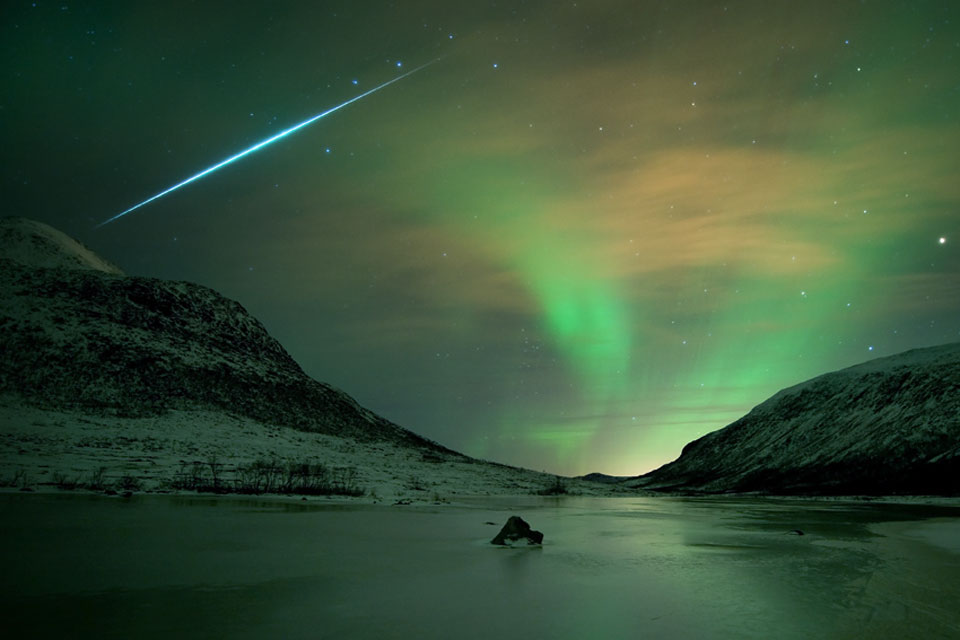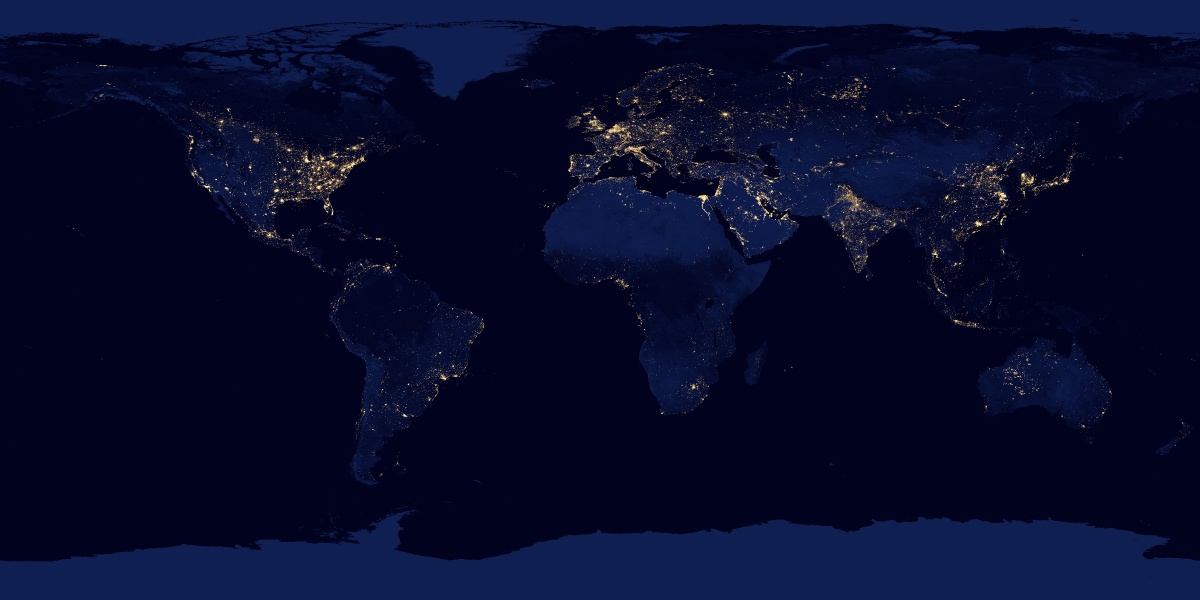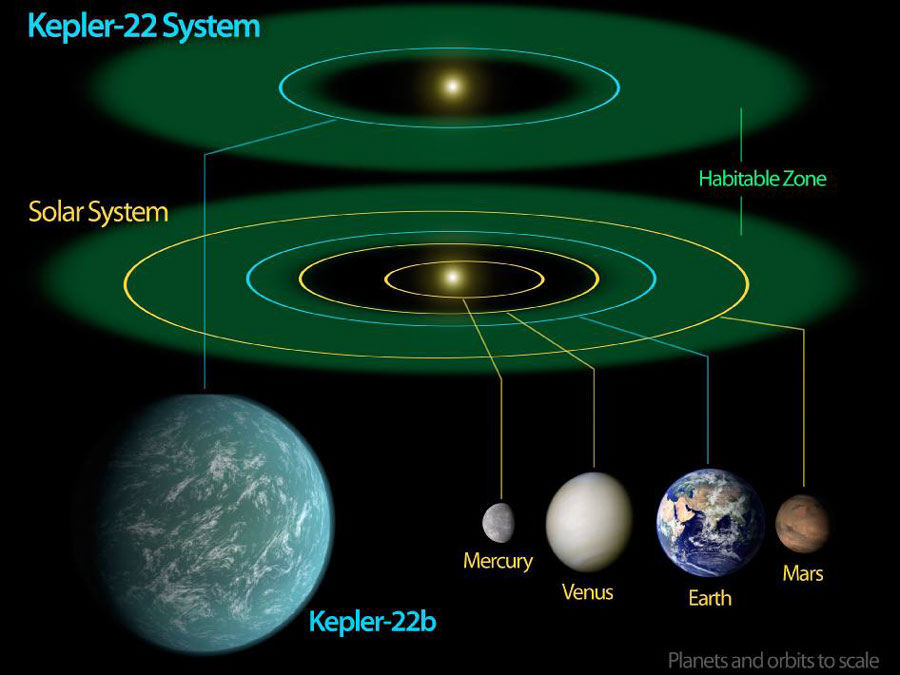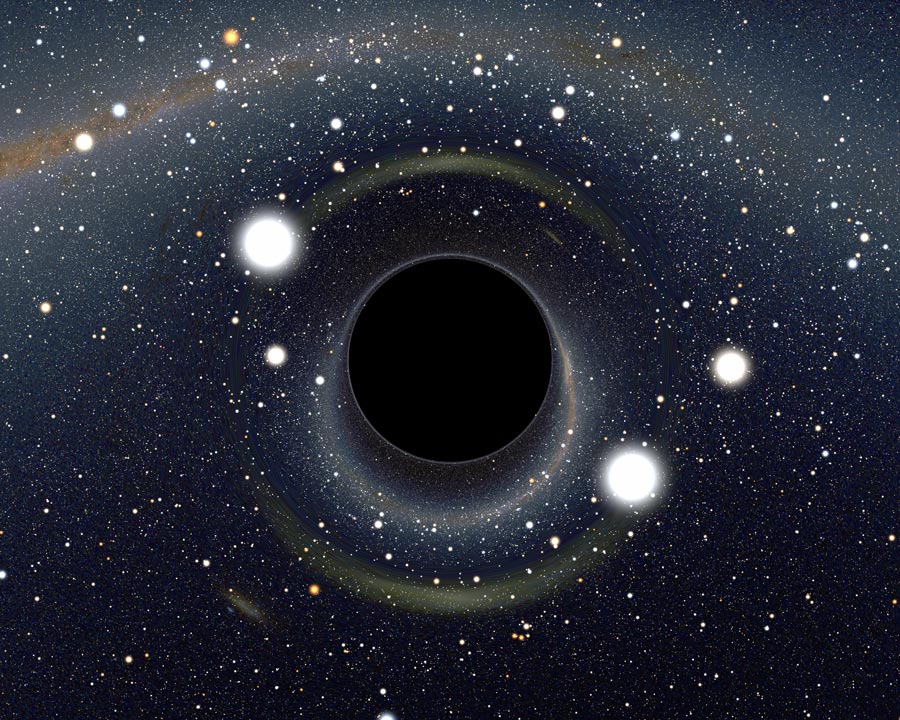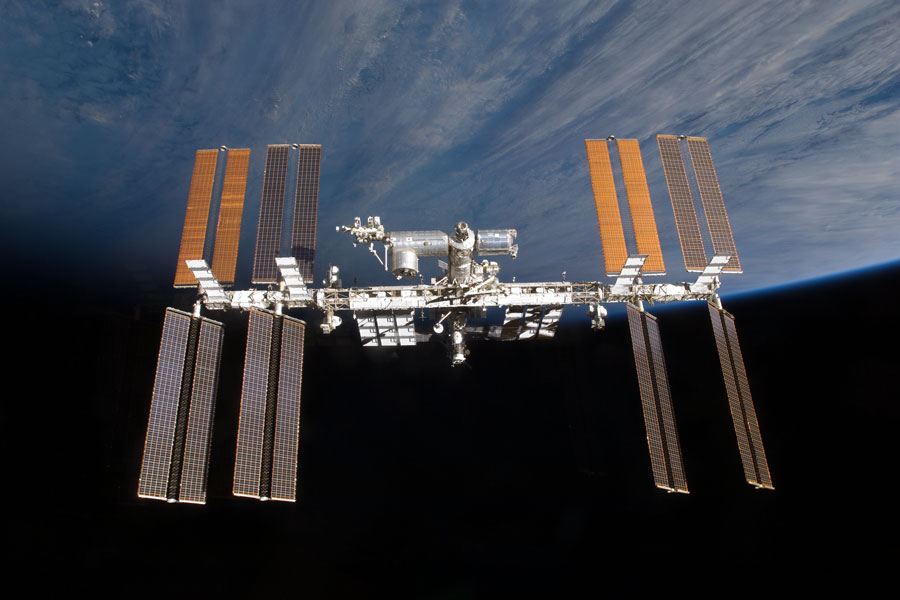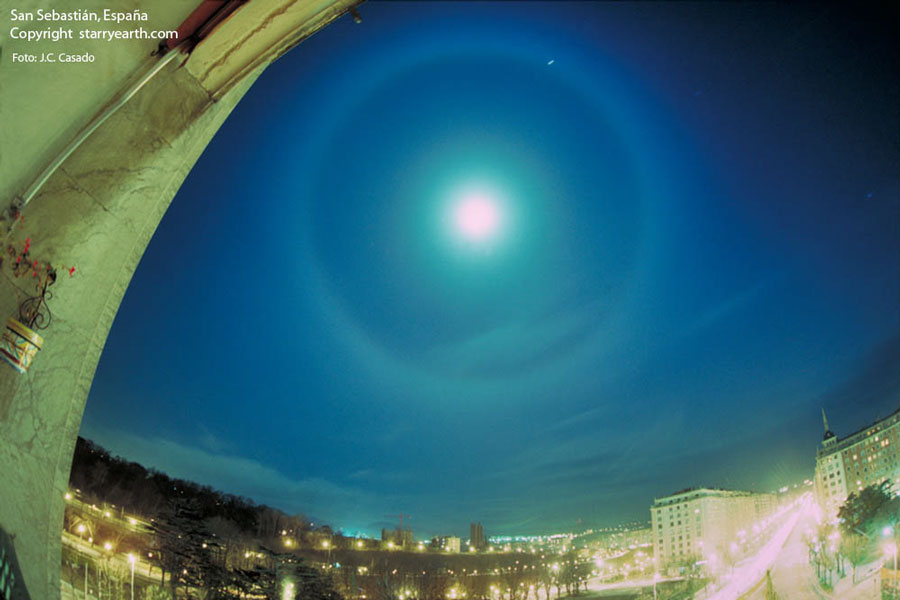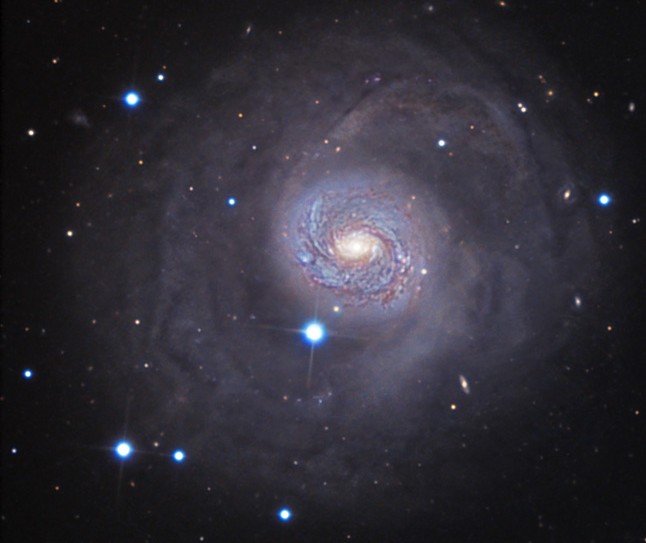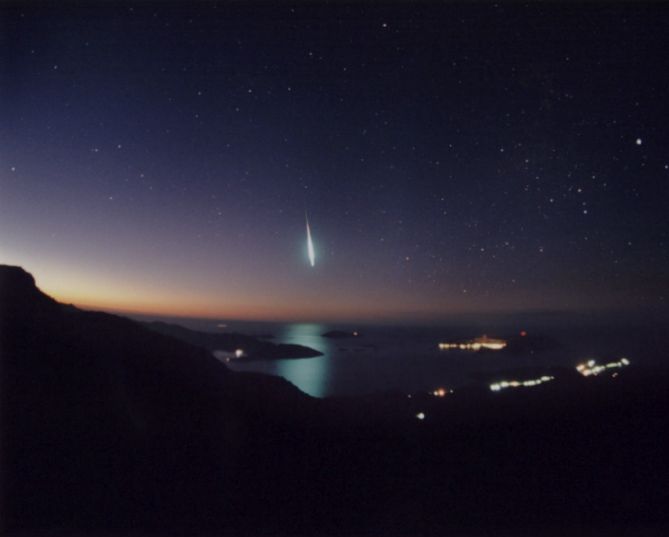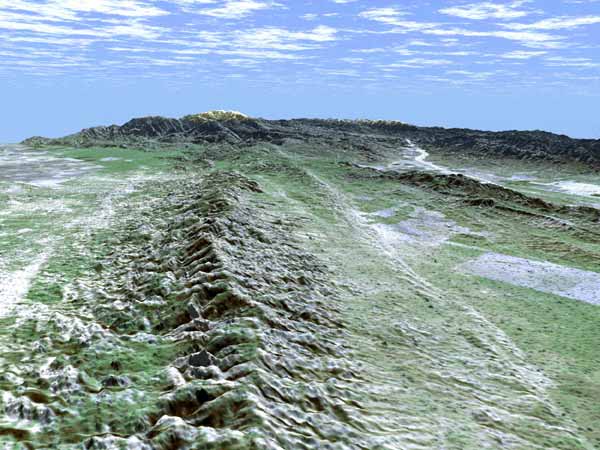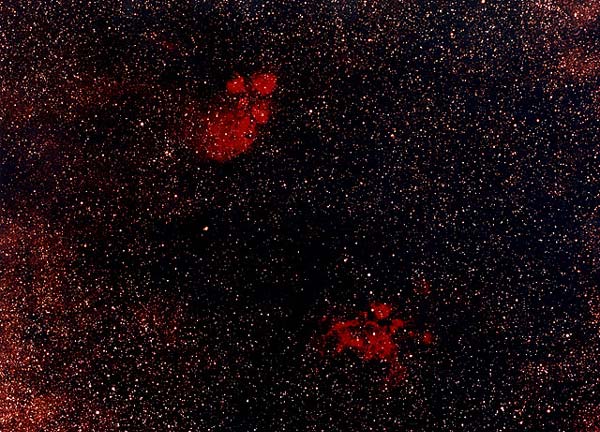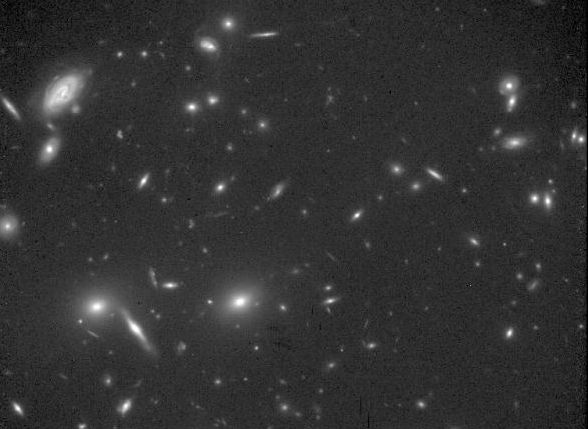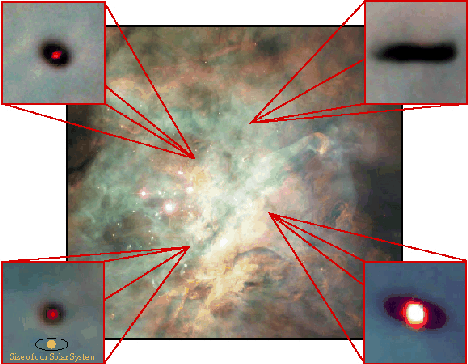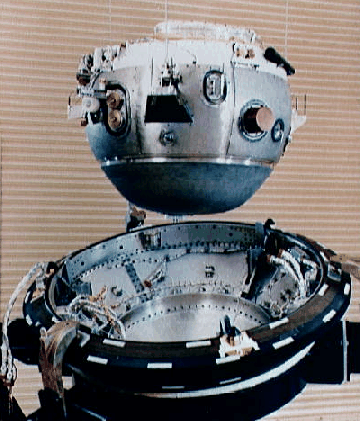| << Previous | Index | Next >> |
Happy Anniversary to APOD on Google+!
2014 Northern Lights, or aurora borealis, haunted skies over the island of Kvaløya, near Tromsø Norway on 2009 December 13. This 30 second long exposure records their shimmering glow gently lighting the wintery coastal scene. A study in contrasts, it also captures the sudden flash of a fireball meteor from the excellent Geminid meteor shower in 2009 December. Streaking past familiar stars in the handle of the Big Dipper, the trail points back toward the constellation Gemini, off the top of the view. Both aurora and meteors occur in Earth's upper atmosphere at altitudes of 100 kilometers or so, but aurora caused by energetic charged particles from the magnetosphere, while meteors are trails of cosmic dust. Toward the end of this week the 2014 Geminids meteor shower will peak, although they will compete with the din of last quarter moonlight.
2013
[imghover6=http://apod.nasa.gov/apod/image/1312/no ... ky600h.jpg]http://apod.nasa.gov/apod/image/1312/no ... labels.jpg[/imghover6]Image Credit & Copyright: Yuri Beletsky (Las Campanas Observatory, Carnegie Institution)
2012
2011 It's the closest match to Earth that has yet been found. Recently discovered planet Kepler 22b has therefore instantly become the best place to find life outside our Solar System. The planet's host star, Kepler 22, is actually slightly smaller and cooler than the Sun, and lies 600 light-years from Earth toward the constellation of the Swan (Cygnus). The planet, Kepler 22b, is over twice the radius of the Earth and orbits slightly closer in, but lies in the habitable zone where liquid water could exist on the surface. Pictured above is an artist's depiction of how Kepler 22b might appear to an approaching spaceship, in comparison to the inner planets of our Solar System. Whether Kepler 22b actually contains water or life is currently unknown. A SETI project, however, will begin monitoring Kepler 22b for signs of intelligence.
2010 What would you see if you went right up to a black hole? Above is a computer generated image highlighting how strange things would look. The black hole has such strong gravity that light is noticeably bent towards it - causing some very unusual visual distortions. Every star in the normal frame has at least two bright images - one on each side of the black hole. Near the black hole, you can see the whole sky - light from every direction is bent around and comes back to you. The original background map was taken from the 2MASS infrared sky survey, with stars from the Henry Draper catalog superposed. Black holes are thought to be the densest state of matter, and there is indirect evidence for their presence in stellar binary systems and the centers of globular clusters, galaxies, and quasars.
2009 This was home. Just over a week ago, the STS-129 crew of the Space Shuttle Atlantis undocked from the International Space Station (ISS) and returned to Earth. As the shuttle departed the space station, they took the above image. Visible on the ISS are numerous modules, trusses, and long wing-like solar panels. The space shuttle crew spent almost 12 days calling the space station home. The shuttle crew resupplied the space station and delivered valuable spare parts. The ISS continues to be home for five astronauts of Expedition 21. The ISS's crew now includes astronauts representing NASA, the European Space Agency, the Russian Federal Space Agency, and the Canadian Space Agency.
2008 Have you ever seen a halo around the Moon? This fairly common sight occurs when high thin clouds containing millions of tiny ice crystals cover much of the sky. Each ice crystal acts like a miniature lens. Because most of the crystals have a similar elongated hexagonal shape, light entering one crystal face and exiting through the opposing face refracts 22 degrees, which corresponds to the radius of the Moon Halo. A similar Sun Halo may be visible during the day. The town in the foreground of the above picture is San Sebastian, Spain. The distant planet Jupiter appears by chance on the halo's upper right. Exactly how ice-crystals form in clouds remains under investigation.
2007 Skygazers recently following Comet Holmes have probably also chanced across this lovely starfield, not far from the comet on the sky in the constellation Perseus. Some 7,000 light-years away, this pair of open or galactic star clusters is an easy binocular target and is visible to the unaided eye from dark sky areas. In fact, it was cataloged in 130 BC by Greek astronomer Hipparchus. Now known as h and chi Persei, or NGC 869(left) and NGC 884, the clusters themselves are separated by only a few hundred light-years and contain stars much younger and hotter than the Sun. In addition to being physically close together, the clusters' ages based on their individual stars are similar - evidence that both clusters were likely a product of the same star-forming region.
2006 Face-on spiral galaxy M77 lies a mere 60 million light-years away toward the aquatic constellation Cetus. Also known as NGC 1068, its very bright core is well studied by astronomers exploring the mysteries of supermassive black holes in active galaxies. While M77 is also seen at x-ray, ultraviolet, infrared, and radio wavelengths, this visible light image highlights another remarkable aspect of the galaxy. In the picture, the data has been enhanced to show outer faint details, following spiral arms and structures that reach far beyond the galaxy's brighter central regions. Including the fainter outskirts, the galaxy's diameter is well over 100 thousand light-years at M77's estimated distance, making it larger than our own spiral Milky Way.
2005 Can you find your favorite European city? The above digital fantasy of Europe at Night is a digital composite of archived satellite images taken both during the day and night. This image is different from what an astronaut would see for reasons including a complete lack of clouds and an unrealistic exaggeration of lights and contrasts. Even so, the geography underlying the image is captivating. Nighttime light patterns have been accumulated from the USAF Defense Meteorological Satellite Program (DMSP) Operational Linescan System.
2004 Meteor experts don't think it's a meteor. Atmospheric scientists don't think it's lightning. The photographer insists that the streak and flash on the above image has not been created digitally. So what is it? Nobody is sure. APOD's editors do not claim to know - one purpose of posting this image is to mine the eclectic brain trust of APOD's readers to help see if some unusual phenomenon was caught serendipitously. The strange features were captured on a series of images intended to monitor cloud changes in the background. Images taken just before and after the above frame show no streak or flash. The light pole near the flash has been inspected and does not show any damage, although the light inside was not working. If you think you know what is going on, instead of sending us email please participate in an online discussion. If a convincing argument or consensus is reached, the answer will be posted on APOD at a later date.
2003 In 1787, astronomer William Herschel discovered the Eskimo Nebula. From the ground, NGC 2392 resembles a person's head surrounded by a parka hood. In 2000, the Hubble Space Telescope imaged the Eskimo Nebula. From space, the nebula displays gas clouds so complex they are not fully understood. The Eskimo Nebula is clearly a planetary nebula, and the gas seen above composed the outer layers of a Sun-like star only 10,000 years ago. The inner filaments visible above are being ejected by strong wind of particles from the central star. The outer disk contains unusual light-year long orange filaments.
2002 Pictured above is the innermost of Jupiter's Galilean satellites, Io, superposed in front of the gas giant planet. To the left of Io is a dark spot that is Io's own shadow. A solar eclipse would be seen from within the shadow spot on Jupiter. Viewed from planet Earth, similar shadows of Jupiter's large moons can often be seen crossing the giant planet's disk. But during the next several months, the Galilean moons can also be seen crossing in front of each other as, for a while, their orbits lie nearly edge-on when viewed by earthbound observers. This true-color contrast-enhanced image was taken two years ago by the robot spacecraft Cassini, as it passed Jupiter on its way to Saturn in 2004.
2001 A road trip from Ankara to the Mediterranean coast southeast of Antalya, Turkey found clear skies and splendid scenery for astrophotographer Tunc Tezel's viewing of the 2001 Leonid meteor storm. There he captured this dream-like image of a fireball meteor near the horizon's twilight glow, reflected in calm ocean waters. Lights from coastal dwellings and nearby islands are seen in the foreground with brilliant Sirius shining as the brightest star in the heavens, visible in the constellation Canis Major at the upper right. Many enthusiasts who made special trips to view this November's Leonids were rewarded with similar spectacles of the fireball-rich storm. Airborne astronomers too had much to be thankful for as Leonid observations from a specially equiped aircraft flying at 40,000 feet produced bountiful data on the chemical composition of these dust grains from a comet's tail.
2000 The Earth's surface is broken. Cracks in the Earth's crust known as faults can run for hundreds of kilometers. These faults are frequently the sites of major earthquakes as the tectonic plates that cover the surface of the Earth shift. Pictured above is San Andreas Fault in California, one of the longest and most active faults. Visible as the linear feature to the right of the mountains, San Andreas Fault reaches 15 kilometers deep and is about 20 million years old. The above exaggerated-height image was created by combining radar deployed by the Space Shuttle Endeavour in February with a true-color Landsat picture. Along San Andreas Fault, the titanic Pacific Plate is shifting relative to the huge North American Plate by an average of a few centimeters per year. At that rate, in a few million years, the Earth's surface will look quite different than it does today.
1999 As soon as we find out whose cat did this . . . Nebulae are as famous for being identified with familiar shapes as perhaps cats are for getting into trouble. No cat, though, could have created the vast Cat's Paw Nebula visible in Scorpius. The Cat's Paw Nebula is the glowing red nebula near the top of the above picture -- the lower nebula is NGC 6357. At 5500 light years distant, Cat's Paw is an emission nebula with a red color that originates from an abundance of ionized hydrogen atoms. Alternatively known as the Bear Claw Nebula or NGC 6334, stars nearly ten times the mass of our Sun have been born there in only the past few million years.
1998 Star cluster RCW38 was hiding. This open cluster of stars is located about 5000 light years away towards the constellation of Vela. Looking there will not normally reveal most of the stars in this cluster, though. The reason is that the open cluster is so young that it is still shrouded in thick dust that absorbs visible light. This dust typically accompanies the gas that condenses to form young stars. When viewed in infrared light, however, the star cluster in RCW38 is revealed, because dust is less effective at absorbing infrared light. The above photograph was one of the first ever taken with the new Infrared Spectrometer and Array Camera (ISAAC) affixed to the 8.2-meter Very Large Telescope.
1997 In this 1994 Hubble Space Telescope photograph, every bright object is a galaxy. Oddly - most of them are spiral galaxies. This rich cluster of galaxies, named CL 0939+4713, is almost half way across the visible universe. Photos like this indicate that clusters in the past contained a higher fraction of spirals than do nearby clusters which are usually dominated by elliptical galaxies.
1996 How do planets form? Astronomers are finding out by studying one of the most interesting of all astronomical nebulae known, the Great Nebula in Orion. Insets to above mosaic show several planetary systems in formation. The bottom left insert shows the relative size of our own Solar System. The Orion Nebula contains many stellar nurseries. These nurseries contain hydrogen gas, hot young stars, proplyds, and stellar jets spewing material at high speeds. Much of the filamentary structure visible in this image are actually shock waves - fronts where fast moving material encounters slow moving gas. Some shock waves are visible near one of the bright stars in the lower left of the picture. The Orion Nebula is located in the same spiral arm of our Galaxy as is our Sun.
1995 Today, at about 5:00 pm EST, this 750 pound probe from NASA's robot spacecraft Galileo will plummet into Jupiter becoming the first probe to fly through the atmosphere of a gas giant planet. Released by the Galileo orbiter in July of this year, it has been coasting toward its rendezvous with the Solar System's largest planet. The probe will smack Jupiter's atmosphere at over 100,000 mph slowing to less than 1,000 mph in a matter of minutes, experiencing a deceleration of about 230 times the Earth's surface gravity. If all goes well, it will then deploy a parachute and descend, using sophisticated instruments to profile Jupiter's dense outer layers of hydrogen and helium gas. Pictured here before launch, the probe descent module (top)is suspended above its deceleration module aeroshell (bottom) prior to being joined. The aeroshell should protect the descent module from the initial shock and heat of entry, which will initially create an intense fireball, over twice as hot as the surface of the Sun.
| << Previous | Index | Next >> |
